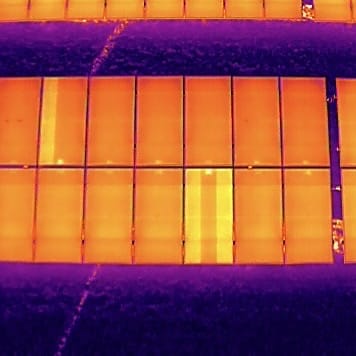How Thermal Imaging Cameras Help Detect Faults and Heat Anomalies in Solar Panels
Thermal imaging cameras are a must have in the solar industry. These allow for quick and accurate temperature readings on solar panels to detect faults or hot spots that could be underlying issues. Early detection of these problems can save on repairs, optimize panel performance and ensure long term health of solar power systems. In this article we will look at how thermal imaging helps with solar panel maintenance and troubleshooting.
Thermal imaging for solar panel inspection
Thermal imaging cameras detect infrared radiation from objects and convert it into visual representations of temperature differences. When applied to solar panels it highlights temperature variations across the surface of the panels, hotspots, faulty cells or areas of inefficiency. This visual data is called a thermogram and is essential for diagnosing issues that can’t be seen with the naked eye, making it a must have for solar panel inspections.

How thermal imaging finds faults in solar panels
Solar panels are complex systems with many individual cells working together to produce electricity. If any of these cells are damaged or malfunctioning they can create hotspots that affect the panel’s overall performance. Thermal imaging cameras can detect these temperature differences early on which helps to identify faulty cells, loose connections or areas of underperformance. Detecting these faults before they cause further damage or reduce system performance is key to maintaining the efficiency and life of a solar power system.

Spotting Heat Anomalies in Solar Panels
Heat anomalies in solar panels can occur for a variety of reasons, such as cell damage, shading, dirt buildup, or aging components. In solar arrays, hot spots may form when a damaged or malfunctioning cell generates excessive heat. Thermal imaging can quickly detect these anomalies, even in large installations with hundreds or thousands of panels. By spotting these issues early, maintenance teams can intervene promptly, whether it involves cleaning the panels, replacing damaged cells, or adjusting panel positioning to reduce shading. This helps ensure the solar system operates at peak efficiency.

Early Detection of Electrical Faults in Solar Systems
Thermal imaging is particularly valuable for detecting electrical faults in solar power systems, such as faulty connections, inverters, or wiring. Overheating in these components often indicates a problem, whether it’s a loose connection, damaged wire, or malfunctioning inverter. Since electrical faults can lead to system failures, fires, or even complete shutdowns, early identification of these issues through thermal imaging can prevent catastrophic events. By regularly monitoring temperature variations, solar energy providers can take proactive steps to resolve problems before they disrupt power generation.

Why Thermal Imaging is Essential for Solar Panel Maintenance
- Non-Invasive Inspections: Thermal imaging allows for non-contact inspections, meaning technicians don’t need to physically touch the panels to detect temperature variations. This method is quick, safe, and efficient.
- Real-Time Diagnostics: Thermal cameras provide instant feedback, enabling immediate identification of problem areas. This is particularly useful for identifying issues during routine maintenance or emergency repairs.
- Prevents Unnecessary Downtime: Identifying faults and heat anomalies early helps avoid unplanned downtime, ensuring the solar panels continue to operate at their full potential. This leads to more consistent energy production and less disruption.
- Cost-Effective Monitoring: By catching small problems before they become bigger, more expensive issues, thermal imaging is a cost-effective solution for ongoing solar panel maintenance. It helps extend the lifespan of the panels and reduces the need for costly repairs or replacements.
The Role of Thermal Imaging in Optimizing Solar Efficiency

One of the biggest advantages of using thermal imaging in solar panel maintenance is its ability to optimize system efficiency. By detecting underperforming cells or hotspots, technicians can address issues that might otherwise go unnoticed, improving the overall performance of the system. This ensures that the maximum amount of energy is being generated and that the solar power system is running smoothly year after year.
Conclusion: The Importance of Thermal Imaging for Solar Panel Troubleshooting
Thermal imaging cameras play a crucial role in solar panel maintenance and fault detection. These cameras help identify temperature variations and heat anomalies that could indicate underlying issues, such as faulty cells, electrical problems, or inefficiencies in the system. By detecting these problems early, solar energy providers can reduce downtime, prevent costly repairs, and ensure that the panels are working at their full potential. With its ability to provide real-time, non-invasive diagnostics, thermal imaging is an essential tool for maintaining the long-term health and efficiency of solar energy systems.
